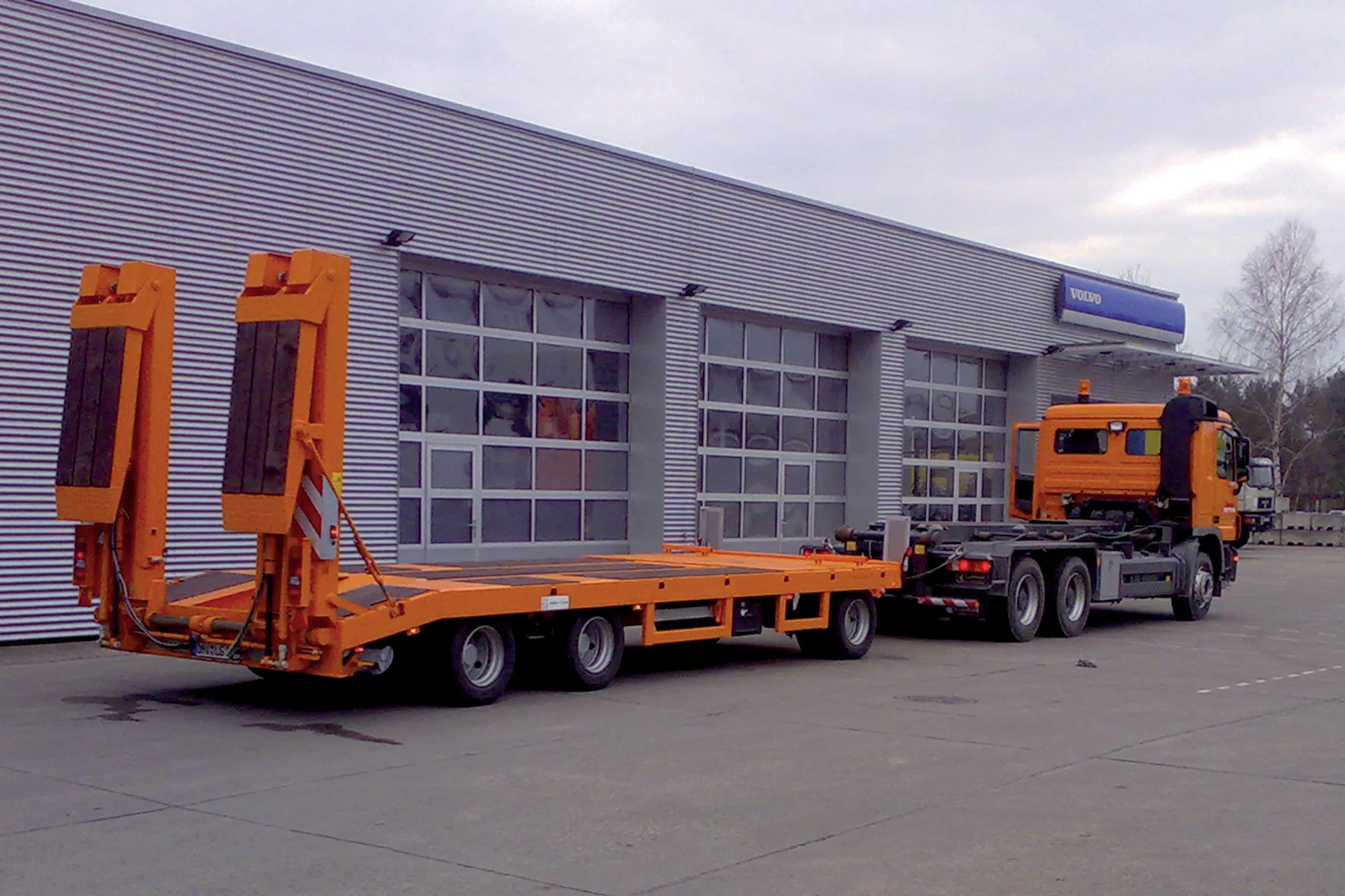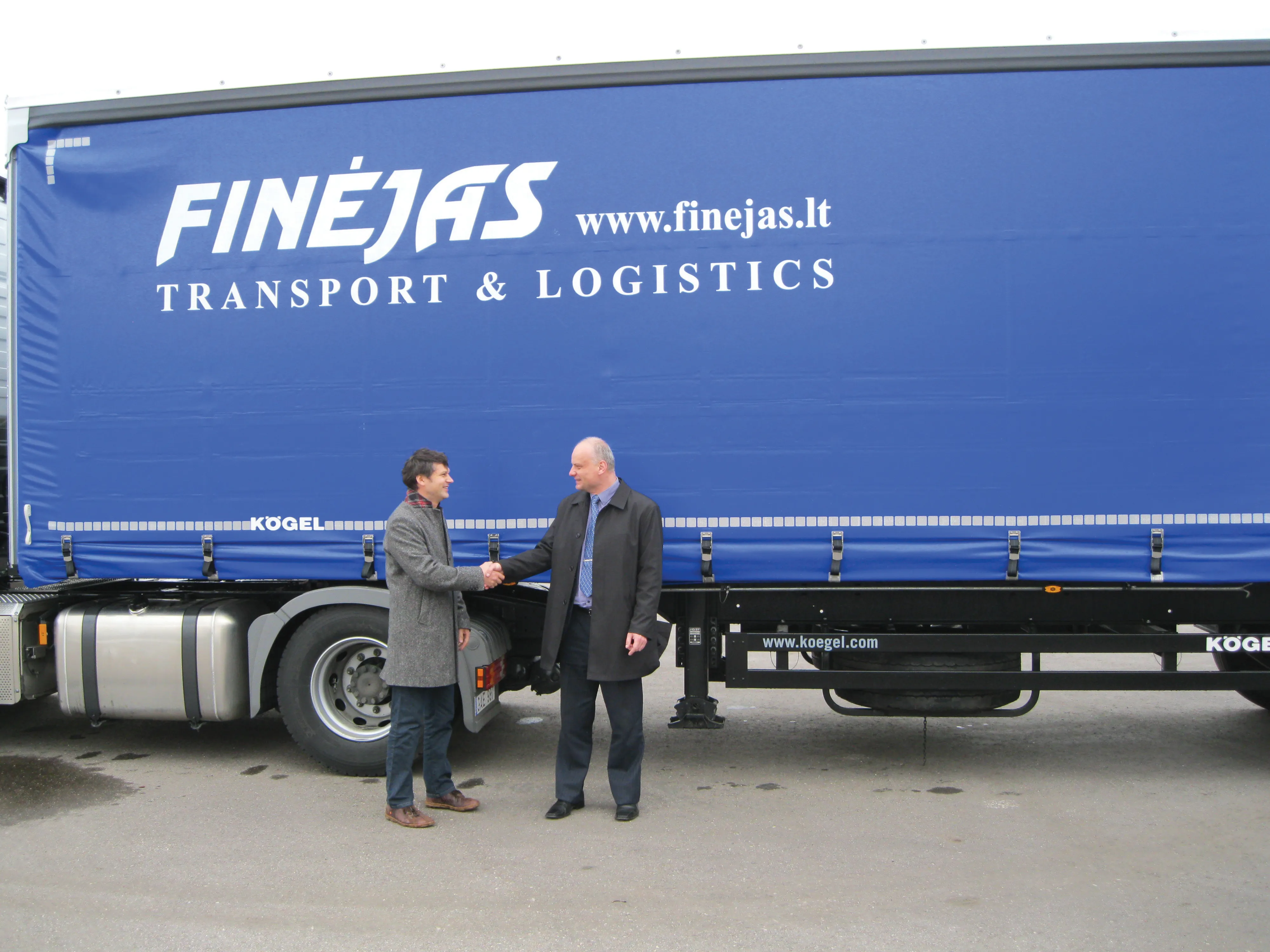Several manufacturers are now offering new solutions for moving heavy construction equipment, with German firms DOLL, Goldhofer and Zandt all introducing new models. DOLL says that its compact Panther units feature new running gear that is said to improve on-road handling and load capacity considerably over competing products in the same size class.
February 14, 2012
Read time: 3 mins

Several manufacturers are now offering new solutions for moving heavy construction equipment, with German firms 1446 DOLL, 1449 Goldhofer and 1450 Zandt all introducing new models. DOLL says that its compact Panther units feature new running gear that is said to improve on-road handling and load capacity considerably over competing products in the same size class. Cost-effectiveness is increased for the user as the Panther series features a higher payload, a low dead weight through oversizing the frame, improved loading height and high manoeuvrability due to the maximum 55º steering angle of the last axle. The trailers also have better driving stability and higher travel through the use of hydraulic suspension and better stability.
Meanwhile Goldhofer has developed a novel snap-on system that allows the user to add three additional axles to a semi-trailer. These can be fitted quickly and easily according to the firm, ensuring versatility and this new smart new system allows customers to insert additional axles to carry higher payloads, or transport cargo with lower axle loads. The concept can be customised to suit the user's requirements with a maximum of three axles being fitted depending on the vehicle configuration.
The operator uncouples the extension tubes on the semitrailer and hauls off the gooseneck and the new axle is then inserted with a crane or fork-lift truck once the electrical and hydraulic systems have been uncoupled. The bogie is equipped with slots to allow hoisting using a fork-lift and this single-axle bogie can be secured using supports for extra safety.
The firm says that adding axles allows haulage contractors and transport firms to save money when operating internationally. For example, the eight axle STZ-H8 semi-trailer can be expanded to a nine axle system boosting payload by 9tonnes to 98.9tonnes. When transporting cargo weighing 80tonnes, the axle load is reduced to 8.888tonnes on a nine axle trailer, compared with 10tonnes for the conventional set-up. However, the additional axle lengthens the loading platform by just 14%, from 12.3-13.72m.
Finally, ZANDT is also offering innovative trailer solutions for drawbar low-bed and tandem low-bed trailers. The firm's drawbar low-bed trailers now include a total of seven series tandem units: the AT-T200 stepped; AT200, AT300 and AT400 and plateau; AT-P200, AT-P300 and AT-P400. High performance is claimed across all classes for load capabilities and body length. The series low-bed tandem trailer AT-T200 is said to be a versatile platform with variable ramps but with additional equipment for ballast transport. Meanwhile the stepped low-bed drawbar trailers are said to meet needs for a wide range of general construction industry duties. The innovative trailer plateau AT-P designs can be used to transport long materials, forms and scaffolding using a multifunctional rung-grid system on the front wall and along the sides.
At688 Bauma the firm is introducing its low-bed tandem trailer models with side panels, the TAT-B110, TAT-B135 and TAT-B180. The firm also has a new tilting low-bed tandem trailer TAT-K110. All the new low-bed tandem trailers are equipped with user-friendly operating designs for securing loads and feature compact design, suiting them to use in narrow streets. The firm also says its new units offer good ergonomics, safety, durability and high quality finish, as well as effective corrosion protection with a new paint layering process that includes zinc dust.
Meanwhile Goldhofer has developed a novel snap-on system that allows the user to add three additional axles to a semi-trailer. These can be fitted quickly and easily according to the firm, ensuring versatility and this new smart new system allows customers to insert additional axles to carry higher payloads, or transport cargo with lower axle loads. The concept can be customised to suit the user's requirements with a maximum of three axles being fitted depending on the vehicle configuration.
The operator uncouples the extension tubes on the semitrailer and hauls off the gooseneck and the new axle is then inserted with a crane or fork-lift truck once the electrical and hydraulic systems have been uncoupled. The bogie is equipped with slots to allow hoisting using a fork-lift and this single-axle bogie can be secured using supports for extra safety.
The firm says that adding axles allows haulage contractors and transport firms to save money when operating internationally. For example, the eight axle STZ-H8 semi-trailer can be expanded to a nine axle system boosting payload by 9tonnes to 98.9tonnes. When transporting cargo weighing 80tonnes, the axle load is reduced to 8.888tonnes on a nine axle trailer, compared with 10tonnes for the conventional set-up. However, the additional axle lengthens the loading platform by just 14%, from 12.3-13.72m.
Finally, ZANDT is also offering innovative trailer solutions for drawbar low-bed and tandem low-bed trailers. The firm's drawbar low-bed trailers now include a total of seven series tandem units: the AT-T200 stepped; AT200, AT300 and AT400 and plateau; AT-P200, AT-P300 and AT-P400. High performance is claimed across all classes for load capabilities and body length. The series low-bed tandem trailer AT-T200 is said to be a versatile platform with variable ramps but with additional equipment for ballast transport. Meanwhile the stepped low-bed drawbar trailers are said to meet needs for a wide range of general construction industry duties. The innovative trailer plateau AT-P designs can be used to transport long materials, forms and scaffolding using a multifunctional rung-grid system on the front wall and along the sides.
At








